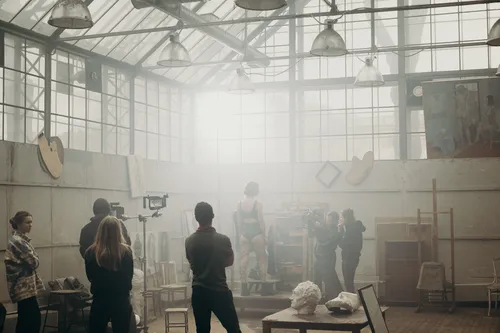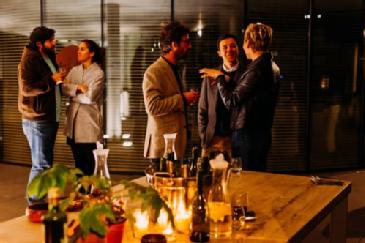'Creativity at work: business as usual?'
Dr Chris Bilton
Centre for Cultural and Media Policy Studies
23 July, 2020
Where do creative ideas come from? Are we having too many meetings and not enough conversations?
Even as some workplaces reopen, we are still a long way ‘business as usual’. Around 60% of us would prefer to continue working from home. Many employers are downsizing or even closing their offices. And rather than meeting face to face, platforms like Zoom, Teams or Slack have become the new normal.

Creativity and networks
One of the things we missed during lockdown is the unexpected, unplanned encounter. These chance encounters often trigger unexpected connections and conversations. They can be a catalyst for creativity. In fact creative thinking often happens at the edge of networks. It’s the weak ties of acquaintances rather than strong ties of friendship which connect us up to other networks, introduce us to strangers and challenge us with unfamiliar ideas.
The limits of digital culture
There’s no reason random connections can’t be achieved digitally. But digital culture is designed to deliver the familiar and the pre-planned. Netflix boasts that its algorithm will give you what you want – according to their own data, 70% of what you watch is determined by predictive algorithms making recommendations. Amazon, Spotify and Facebook use the same logic – if you liked that, you might like this.
The platforms making these connections are profit-driven – and herding us towards predictable and mainstream choices is more profitable than the long tail. Digital bookstores don’t do ‘browsability’. ‘Discovery’ remains a problem for streaming services – not because it’s technically difficult, but because real individualism is less marketable than steering consumers towards greatest hits.

Water cooler moments
Are things better, more spontaneous in the non-digital, embodied world? Neighbourhood planners talk about ‘bumps into per square minute’ as a metric of healthy, sociable communities. Office managers and architects try to engineer ‘water cooler’ encounters in the workplace, where people can gather and interact. Companies like Google have built ‘unstructured time’ into the working day. Facebook encourages its employees to be disruptive, to move fast and break things. There are several problems here. First, whether it’s online or offline, relationships at work tend to operate within social bubbles and comfort zones – at the water cooler and the WhatsApp group, we gravitate to familiar faces and similar topics. Secondly, planned spontaneity is not really spontaneous. When ‘alternative’ spaces are incorporated into workplaces, they lose their edge. None of us likes to fell we’re being manipulated. Bringing playtime into the office is like working from home – it means we can never really switch off.
The importance of down time
We need less structure in the workplace certainly: more conversations and fewer meetings. But we also need time outside the workplace, time on our own in spaces which are not ‘productive’. In the creative industries, socialising outside the job has become part of the job. Networking in pubs and bars is where deals get made, contacts established.
But I’d argue that these pragmatic relationships are not the same as creative connections. For that we need agency to choose our own networks and to form other relationships. We need time away from work. Unfamiliar ideas and people are more likely to intersect outside the more focused and goal-oriented environment of work – for example a conversation with a child about popular culture, a friend of a friend with different political beliefs, even reading a blog. If we are going to learn new things and encounter new ideas, we need to make space for those other, unscheduled, unproductive and unplanned conversations to happen.
Creative sparks
For our own mental health, but also for our creative potential, we need to break out of a planned, structured work environment. So step away from the screen, go for a walk, take a digital diversion. You might feel you’re wasting time. You probably are. But maybe you will bump into somebody or something you weren’t expecting, and spark a new idea.
Dr Chris Bilton is a Reader in Creative Industries in the Centre for Cultural & Media Policy Studies, and Creative Industries Lead on Warwick’s new Global Research Priority on Productivity and the Futures of Work.

